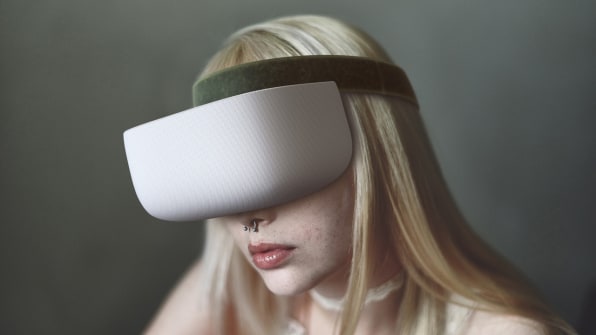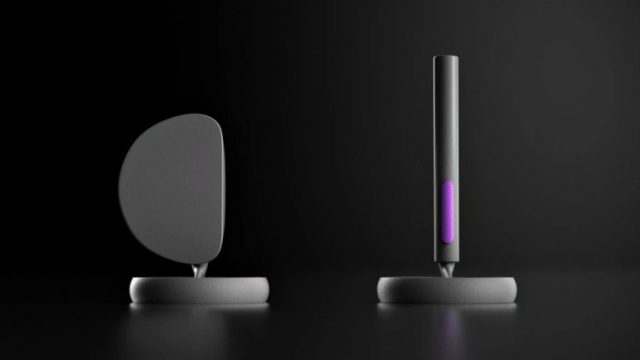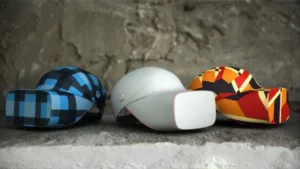A team of designers from industrial firm Nonobject have created a range of head-mounted display (HMD) prototypes, targeting improved comfort, outward appearance and ease of use as VR is adopted into more and more facets of our daily lives. The products were shared with Fast Company Design, with the hope that they would be “stolen” and mass-produced.
According to Fast Company Design, the reality of that could be closer than we think. Each one of these prototypes is fully constructed and operational, using the Oculus platform, and FCD’s article states “they could all be feasibly mass-produced tomorrow”. Below is a brief description of each of the designs and how it proposes to change the VR game.
Kepi appeals to the intuitive nature of humans, designed to be worn as a piece of clothing rather than an electronic device. A VR headset built into a baseball cap design, Kepi can be easily pulled on and off, and adjusted at the sides for a good fit. Weight is distributed across the entire skull rather than individual pressure points created by straps, and the cap has been designed so the VR module can be removed, allowing the fabric element to be washed.
Split also looks at an easier way to wear and remove a VR headset—this design comes apart and snaps back together at the front, suitable for any VR technology that uses a separate display for each eye. Interestingly, but not necessarily related, a patent of LG’s new VR headset that was released last week indicated that it will follow this very same design.
Designer Kevin Kilpatrick describes Spect as “our attempt to make VR a shareable experience”. It uses specially-designed spring-loaded arms with pads that clamp onto your head, much like a pair of glasses.

Serene is all about comfort. The eyepiece attaches to a soft-material head band worn around the crown of the head, and dangles down in front of the eyes, naturally falling into place wherever it needs to be. Studio owner Branko Lukic, founder of Nonobject, describes it as “a sofa for your eyes”.

Nonobject designers have also come up with new designs for VR peripherals, looking at new innovations that can allow us to do more in VR. One design, called Grasp, does much what it says on the tin—it allows the user to grasp, and even throw, objects. It also features an adjustable strap ergonomically designed to reduce strain on the wrist.
Meanwhile, Stone is very abstract, and it’s unclear how exactly it fits in to the whole peripheral equation. It is just that. A stone—and a touch-sensitive one at that. Kilpatrick spoke about the device, saying:
“For this, we focused mostly on how you perform creative tasks in new ways. Sculpting. Video editing. This could be expanded into a whole range of tools.”
FastCompanyDesign’s Mark Wilson also wrote, “Whereas the controllers for the HTC Vive are fit with triggers that make them feel more like guns, Stone, accompanied with an airbrush tool in your other hand, lets you draw intricate structures at a very granular layer.”


